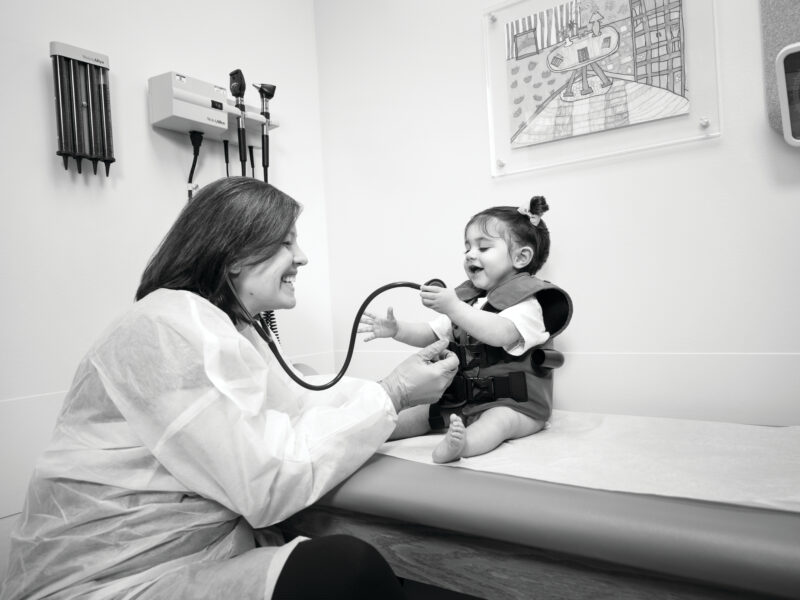Health Care Leaders Offer Interim Guidelines on Vaping and EVALI Care
Health Care Leaders Offer Interim Guidelines on Vaping and EVALI Care https://pediatricsnationwide.org/wp-content/themes/corpus/images/empty/thumbnail.jpg 150 150 Mary Bates, PhD Mary Bates, PhD https://secure.gravatar.com/avatar/c6233ca2b7754ab7c4c820e14eb518c8?s=96&d=mm&r=g- November 17, 2019
- Mary Bates, PhD
While investigations are ongoing, an interim report offers clinical guidance regarding vaping-associated lung injuries.
Centers for Disease Control (CDC), the Food and Drug Administration (FDA), state and local health departments, and public health and clinical partners are looking into a multistate outbreak of lung injury associated with the use of electronic cigarette (e-cigarette), or vaping, products.
Now, a report by a working group of experts offers guidance to health care providers caring for patients with EVALI (e-cigarette, or vaping, product use associated lung injury).
“This is a rapidly developing situation. We hardly know anything about these products,” says Don Hayes Jr., MD, MS, MEd, a pulmonologist at Nationwide Children’s and a member of the working group who was designated by the American Thoracic Society for development of the document.
As of October 8, 2019, nearly 1,300 cases of EVALI have been reported to CDC from across the United States. While no single compound or ingredient has emerged as the sole cause of these injuries, a November 8 report from the CDC identifies vitamin E acetate as a “very strong culprit” in EVALI related to vaping THC.
In response to this national epidemic, the CDC assembled a working group of experts in pulmonary medicine and critical care with expertise in lung injury and EVALI. The resulting interim guidelines for health care providers were released in October.
At present, EVALI is considered a diagnosis of exclusion because no specific tests or markers exist for its diagnosis. The working group recommends that health care providers evaluating suspected EVALI patients should ask about use of vaping products in a nonjudgmental manner. Patients should be evaluated with a chest radiograph and hospital admission is recommended for those with decreased blood oxygen saturation or who are in respiratory distress. The working group suggests health care providers consider use of a combination of antibiotics, antivirals or corticosteroids based on clinical context.
The FDA and CDC have not yet identified the cause or causes of these lung injuries; the only commonality among all cases is that patients report the use of vaping products. THC-containing products appear to play a role in this outbreak, but nicotine-containing products have not been excluded as a possible cause. At this time, CDC recommends that people should not use vaping products, whether they contain THC or nicotine.
Dr. Hayes is leading an effort to formulate respiratory and critical care-specific management recommendations.
“This team will work to create a document for pulmonary and critical care doctors encountering patients with suspected EVALI,” says Dr. Hayes. “EVALI is happening across the country, and we’ve seen several cases here at Nationwide Children’s.”
Download the guidelines: Clinical Evaluation and Management of Patients With Suspected EVALI
Reference:
Siegel DA, Jatlaoui TC, Koumans EH, et al. Update: Interim Guidance for Health Care Providers Evaluating and Caring for Patients with Suspected E-cigarette, or Vaping, Product Use Associated Lung Injury — United States, October 2019. Morbidity and Mortality Weekly Report (MMWR). 2019;68:919–927. DOI: http://dx.doi.org/10.15585/mmwr.mm6841e3external icon
About the author
Mary a freelance science writer and blogger based in Boston. Her favorite topics include biology, psychology, neuroscience, ecology, and animal behavior. She has a BA in Biology-Psychology with a minor in English from Skidmore College in Saratoga Springs, NY, and a PhD from Brown University, where she researched bat echolocation and bullfrog chorusing.
-
Mary Bates, PhDhttps://pediatricsnationwide.org/author/mary-bates-phd/December 27, 2016
-
Mary Bates, PhDhttps://pediatricsnationwide.org/author/mary-bates-phd/
-
Mary Bates, PhDhttps://pediatricsnationwide.org/author/mary-bates-phd/
-
Mary Bates, PhDhttps://pediatricsnationwide.org/author/mary-bates-phd/
- Posted In:
- In Brief






